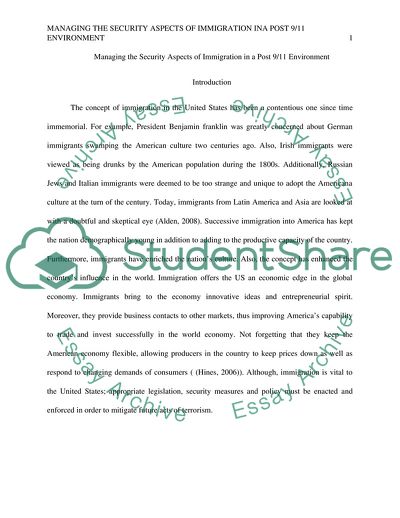Cite this document
(Managing Security Aspects of Immigration in a Post 9/11 Environment Report Example | Topics and Well Written Essays - 2000 words, n.d.)
Managing Security Aspects of Immigration in a Post 9/11 Environment Report Example | Topics and Well Written Essays - 2000 words. https://studentshare.org/social-science/1881315-managing-the-security-aspects-of-immigration-ina-post-911-environment
Managing Security Aspects of Immigration in a Post 9/11 Environment Report Example | Topics and Well Written Essays - 2000 words. https://studentshare.org/social-science/1881315-managing-the-security-aspects-of-immigration-ina-post-911-environment
(Managing Security Aspects of Immigration in a Post 9/11 Environment Report Example | Topics and Well Written Essays - 2000 Words)
Managing Security Aspects of Immigration in a Post 9/11 Environment Report Example | Topics and Well Written Essays - 2000 Words. https://studentshare.org/social-science/1881315-managing-the-security-aspects-of-immigration-ina-post-911-environment.
Managing Security Aspects of Immigration in a Post 9/11 Environment Report Example | Topics and Well Written Essays - 2000 Words. https://studentshare.org/social-science/1881315-managing-the-security-aspects-of-immigration-ina-post-911-environment.
“Managing Security Aspects of Immigration in a Post 9/11 Environment Report Example | Topics and Well Written Essays - 2000 Words”. https://studentshare.org/social-science/1881315-managing-the-security-aspects-of-immigration-ina-post-911-environment.


